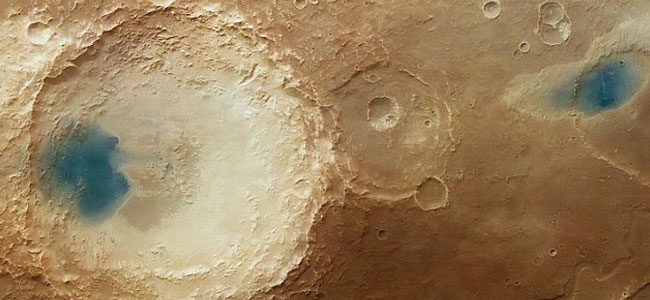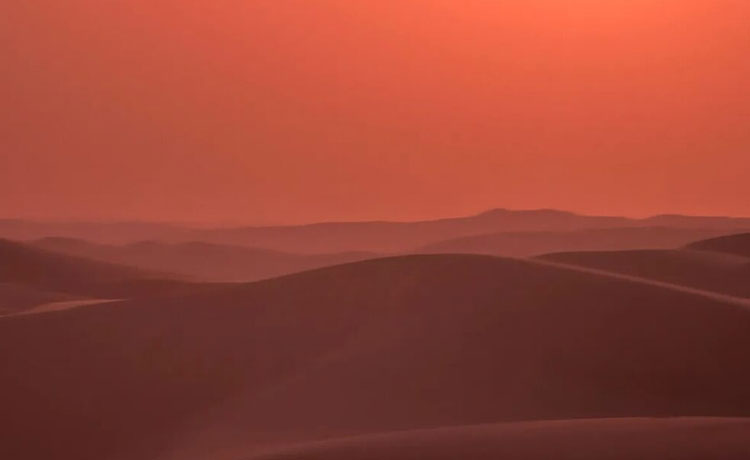
The Mysterious Blue Lagoons of MARS
An image has emerged showing what looks like hints of blue, liquid water gathering on Mars’ surface.
But according to the European Space Agency (Esa), these mysterious patches are nothing more than an optical illusion.
The blue areas, which can be seen within ragged Martian craters, are dark sediments that have built up over time.
Like on Earth, winds shape the environment on Mars over time, forming smooth, sculpted rocks and rippling dunes.
But on the red planet, these winds can hit 60mph (100 km/h).
These intense winds are enough to create giant dust storms that settle across huge swathes of Mars, lasting for many days or even weeks.
As these winds travel they carve their surroundings, eroding and smoothing and gradually wearing away the planet’s surface features over millions of years.
They also cause sediment build-up, with the ferocious winds carrying dark, volcanic, basalt-rich deposits across the planet.
These layers of darker dust get trapped in the craters pockmarking the landscape, according to a report in iO9.
Over time, enough of the darker dust collects on the crater’s surface and appears as the blue patches than can be seen in these images.
Evidence of these processes can be seen in an image , taken by the European Space Agency's Mars Express orbiter.
The image shows part of the Arabia Terra region, which is scattered with craters of varying sizes and ages.
The craters in this image, caused by impacts in Mars’ past, all show different degrees of erosion.
Some still have defined outer rims and clear features within them, while others are much smoother and featureless, almost seeming to run into one another or merge with their surroundings.
The largest crater in the main image also has the steepest rim. With a diameter of some 43 miles (0 km), this crater dominates the left, southern, side of the frame.
This colour image was taken by Mars Express’s High Resolution Stereo Camera on 19 November 2014, during orbit 13728.










